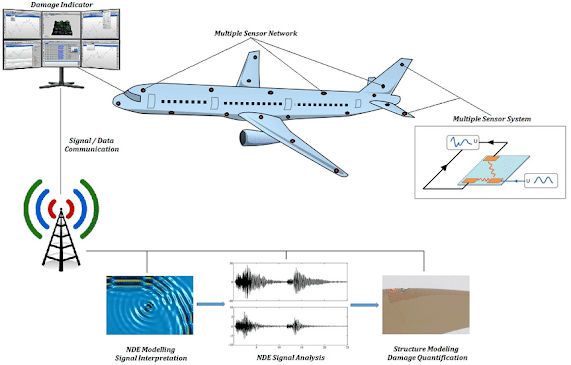Main Battle Tank Market to Observe Surprising Growth Outlook by 2030
In 2022, the global main battle tank market was worth a hefty $5.35 billion. That number is expected to climb steadily, reaching an estimated $6.9 billion by 2030. While not a massive boom, the market is still projected to grow at a decent pace of 3.2% each year. The rumble of its engine, the glint of its armor, the sheer power it projects – the main battle tank (Main Battle Tank Market) remains a dominant force on the battlefield. This heavily armored and armed vehicle serves as the backbone of modern land warfare, capable of delivering firepower, protection, and maneuverability in a single package. This report delves into the history, design, capabilities, and future of the Main Battle Tank Market.
Informational Source:
https://www.fortunebusinessinsights.com/main-battle-tank-market-107367
Companies Profiled Covered in Main Battle Tank Market are:
- General Dynamics Corporation (U.S.)
- Hyundai Rotem (South Korea)
- BAE Systems plc (U.K.)
- Nexter Systems (France)
- BMC (Turkey)
- Israel Military Industries (Israel)
- Rheinmetall AG (U.S.)
- Krauss-Maffei Wegmann GmbH and Co. KG (Germany)
- Mitsubishi Heavy Industries (Japan)
- Safran (U.S.)
From Humble Beginnings to Steel Titans:
The concept of the tank has its roots in World War I, where the need arose to overcome the stalemate created by trench warfare. Early tanks were lumbering machines, vulnerable to artillery and easily bogged down in mud. However, they paved the way for advancements in armor, firepower, and mobility, leading to the development of the Main Battle Tank Market during World War II.
Anatomy of a Beast: Key Components of an Main Battle Tank Market:
- Armor: The Main Battle Tank Market's primary defense is its robust armor, typically composed of composite materials like steel, ceramics, and even depleted uranium. This layered approach provides protection against a variety of threats, including kinetic projectiles (bullets), shaped charges (anti-tank rockets), and chemical weapons.
- Main Gun: The Main Battle Tank Market boasts a large-caliber main gun, typically ranging from 105mm to 125mm, capable of firing high-explosive and armor-piercing rounds with devastating effect at long distances. Advanced fire control systems enhance accuracy and allow for engagement while on the move.
- Secondary Armament: Main Battle Tank Markets are not one-trick ponies. They are usually equipped with coaxial machine guns for engaging infantry and lighter vehicles, as well as smoke grenade launchers to create obscuration for maneuvers.
- Engine and Transmission: Powering this metal behemoth is a powerful engine, often a diesel or multi-fuel powerplant, capable of propelling the tank at speeds exceeding 40 kilometers per hour (25 mph) over rough terrain. A robust transmission system allows for smooth gear changes and efficient power transfer.
- Suspension System: Main Battle Tank Markets navigate challenging terrain thanks to their sophisticated suspension systems. These systems absorb shock and vibrations, ensuring a stable firing platform even while moving at high speeds.
Beyond the Basics: Unique Features of Modern Main Battle Tank Markets
While core components remain similar across Main Battle Tank Markets, advancements offer unique capabilities:
- Active Protection Systems (APS): These cutting-edge systems can detect and neutralize incoming threats like anti-tank missiles before they impact the tank.
- C4ISR Systems (Command, Control, Communications, Computers, Intelligence, Surveillance, and Reconnaissance): These integrated systems provide advanced situational awareness for the crew, allowing them to share battlefield information and coordinate maneuvers effectively.
- Modular Armor Packages: Modern Main Battle Tank Markets often have modular armor kits that can be added or removed based on the mission requirements, offering flexibility in terms of protection and weight.
The Main Battle Tank Market: A Multifaceted Role
Main Battle Tank Markets are not just offensive weapons. They play a crucial role in various military operations, including:
- Spearheading Breakthroughs: Main Battle Tank Markets can lead assaults, breaking through enemy defenses with their powerful guns and heavy armor.
- Anchoring Defenses: Their presence on the battlefield provides a significant psychological deterrent and bolsters defensive lines.
- Supporting Infantry: Main Battle Tank Markets can provide fire support for infantry units, suppressing enemy positions and clearing obstacles.
The Evolving Battlefield: Challenges and Future Trends
The Main Battle Tank Market faces new challenges in the 21st century:
- Urban Warfare: The shift towards urban warfare environments can limit maneuverability and expose Main Battle Tank Markets to closer-range threats like anti-tank weapons.
- Asymmetric Warfare: Non-state actors and insurgent groups increasingly employ tactics like ambushes and IEDs (Improvised Explosive Devices) to counter Main Battle Tank Markets.
- Anti-Tank Technologies: Advancements in anti-tank weaponry necessitate continuous upgrades to Main Battle Tank Market armor and protection systems.
Looking Ahead: The Future of the Main Battle Tank Market
Despite these challenges, the Main Battle Tank Market is likely to remain a vital component of land forces for years to come. Here are some future trends to consider:
- Enhanced Urban Warfare Capabilities: Main Battle Tank Markets may be equipped with improved situational awareness systems and active protection systems better suited for close-quarter combat.
- Unmanned Turrets and AI Integration: The future might see Main Battle Tank Markets with remotely operated or even AI-controlled turrets, reducing crew exposure and enhancing decision-making capabilities.
- Focus on Networked Warfare: Main Battle Tank Markets will likely become increasingly integrated into networked battlefields, sharing data and coordinating maneuvers with other combat platforms.




Comments
Post a Comment